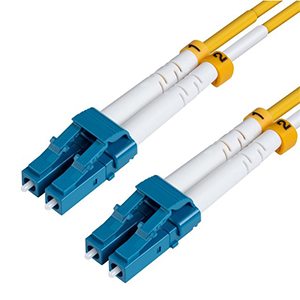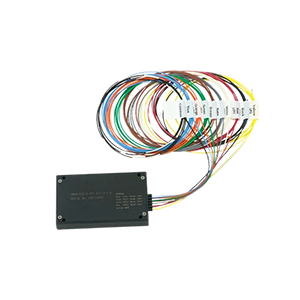SFP modules are undoubtedly widely used in switches and routers. This article will explore the meaning of the “SR” logo on SFP modules. We will first define the characteristics of SFP (Small Form-factor Pluggable) modules and explain how they work in network devices. Next, we will explain the specific meaning of the “SR” logo and the technology it represents, and explain the difference between “SR” and other SFP module logos.
We will analyze the advantages of “SR” SFP modules in terms of transmission distance, bandwidth, etc., and explore their operating wavelength and application applicability. In addition, we will list the typical applications of “SR” SFP modules in network devices such as switches and routers, and explain their advantages and usage precautions in different scenarios. Finally, we will describe the correct installation and configuration methods of “SR” SFP modules and analyze their compatibility with other optical modules.
Basic Concepts of SFP Modules
Very good, let me introduce you in detail the basic concepts of SFP (Small Form-factor Pluggable) modules and their working principles in network devices.
Features of SFP modules:
(1) Miniaturized design:
- SFP modules adopt a small pluggable form factor and take up little space.
- This is conducive to improving the integration and rack density of network devices.
(2) Modular structure:
- SFP modules adopt a modular design and can be flexibly replaced according to needs.
- Different SFP modules can support different transmission rates and optical/electrical media.
(3) High-speed transmission:
- SFP modules support 1G, 2.5G, 4G, 8G, 10G and other high-speed Ethernet transmission.
- It can meet the network transmission needs of future high-bandwidth applications.
(4) Low-power design:
- The streamlined design of SFP modules helps reduce power consumption and heat dissipation requirements.
- This is especially important for fanless compact network devices.
(5) Cost-effectiveness:
- The manufacturing cost of SFP modules is relatively low, which helps reduce the overall cost of equipment.
- With flexible modular features, it can be customized and deployed according to actual needs.
Working principle of SFP module in network equipment:
(1) Interface connection:
- The SFP module is connected to the SFP port on the network equipment (such as switches, routers, etc.).
- The input and output of data signals are realized through the physical interface.
(2) Signal conversion:
- The SFP module integrates optical-electrical conversion circuit or serial-to-parallel conversion circuit.
- According to the connected transmission medium (optical fiber or copper cable), the optical-electrical conversion of the signal is realized.
(3) Data transmission:
- The SFP module converts the digital electrical signal of the device into an analog signal suitable for the transmission medium.
- High-speed data transmission between network devices is realized through optical fiber or copper cable.
(4) Module management:
- Some SFP modules integrate EEPROM, which can communicate with the device master in two directions.
- It is used for module identification, configuration, monitoring and other management functions.
In short, as a pluggable interface of network equipment, SFP module provides a flexible and efficient data transmission solution for network equipment through its miniaturization, modularization, high-speed transmission and other characteristics.
“SR” mark on SFP module
Let me explain in detail the “SR” mark on SFP module and its meaning.
The specific meaning of the “SR” mark and the technology it represents:
“SR” is the abbreviation of Short Reach, which means short-distance optical transmission. In SFP modules, it represents the following technical characteristics:
(1) Optical transmission distance:
- The optical transmission distance supported by the “SR” SFP module is usually 300-550 meters.
- It is suitable for relatively short optical fiber line distances, such as inside data centers.
(2) Optical wavelength:
- The “SR” SFP module generally uses an 850nm vertical cavity surface emitting laser (VCSEL).
- The optical signal of this wavelength has lower loss when transmitted in multimode optical fiber.
(3) Optical power:
- The optical transmission power and optical receiving sensitivity of the “SR” SFP module are lower.
- But it can still meet the power requirements of short-distance optical transmission.
Please note that the “SR” logo indicates that the SFP module adopts the technical solution of short-distance optical transmission and is mainly used in relatively short optical fiber network links.
The difference between “SR” and other SFP module logos:
In addition to “SR”, SFP modules have some other common technical logos, such as:
(1) “LR”: Long Reach, represents long-distance optical transmission, supporting a transmission distance of 10-40 kilometers.
(2) “ER”: Extended Reach, represents ultra-long-distance optical transmission, supporting a transmission distance of 40-80 kilometers.
(3) “ZR”: Zero Dispersion Reach, represents zero-dispersion long-distance transmission, up to 80-120 kilometers.
(4) “Cu”: Copper, which means that copper cables are used for electrical signal transmission instead of optical fibers.
In contrast, SFP modules with the “SR” logo have a shorter transmission distance, but are more cost-effective and power-efficient, and are suitable for short-distance network scenarios. Other logos represent longer-distance transmission capabilities, but are relatively more cost-effective and power-efficient. The “SR” logo clearly indicates the technical characteristics and application scenarios of the SFP module, which helps network administrators choose the right module to meet actual needs.
Main features of “SR” SFP modules
Let me analyze in detail the main features of the “SR” (Short Reach) SFP module in terms of transmission distance, bandwidth, etc., as well as its operating wavelength and applicability.
Main features of the “SR” SFP module:
(1) Transmission distance:
- The optical transmission distance supported by the “SR” SFP module is usually 300-550 meters.
- This relatively short transmission distance is suitable for close-range network scenarios such as data centers and campus networks.
(2) Bandwidth support:
- The “SR” SFP module can support a variety of high-speed Ethernet standards such as 1GbE, 10GbE, and 25GbE.
- It meets the needs of enterprise networks for high-bandwidth transmission.
(3) Power consumption and cost:
- Due to the short transmission distance, the optical transmission power and power consumption of the “SR” SFP module are relatively low.
- At the same time, the manufacturing cost is also lower than other types of SFP modules.
(4) Integration:
- The “SR” SFP module adopts an integrated VCSEL (vertical cavity surface emitting laser) design.
- This highly integrated design is conducive to improving the port density of network equipment.
The operating wavelength of the “SR” SFP module and its application applicability:
(1) Operating wavelength:
- The “SR” SFP module usually uses 850nm VCSEL as the light source.
- The transmission loss of optical signals with this wavelength is low in multimode optical fiber.
(2) Application applicability:
- Since the transmission distance of optical signals with a wavelength of 850nm in multimode optical fiber is limited,
- “SR” SFP modules are more suitable for small and medium-sized network environments, such as data centers, campus networks, etc.
(3) Comparison with other SFP modules:
- In contrast, “LR” (Long Reach) and “ER” (Extended Reach) SFP modules use 1310nm or 1550nm wavelengths,
- which can achieve longer distance single-mode optical fiber transmission, but at a higher cost and power consumption.
In short, the “SR” SFP module is very suitable for small and medium-sized short-distance network scenarios due to its relatively short transmission distance, low power consumption, and low cost. Network administrators can choose the appropriate SFP module type according to actual needs.
Application scenarios of “SR” SFP modules
Let me introduce you in detail the typical application scenarios of “SR” (Short Reach) SFP modules in network devices, as well as its advantages and usage precautions in different applications.
Typical applications of “SR” SFP modules in network devices:
(1) Data center switches:
- The interconnection between network nodes within the data center carries high-bandwidth data traffic.
- The short-distance transmission characteristics of the “SR” SFP module are very suitable for this application scenario.
(2) Campus network switch:
- Connections between different buildings and classrooms in the campus network.
- The low cost and easy deployment of the “SR” SFP module are very suitable for such applications.
(3) Router optical interface:
- The interface on the router used to connect to the optical fiber trunk line.
- The “SR” SFP module can achieve seamless connection between the router and the optical fiber network.
(4) Optical access equipment:
- Such as OLT (optical line terminal), PON (passive optical network) equipment, etc.
- The “SR” SFP module can provide an economical and affordable short-distance optical transmission solution.
Advantages and precautions of “SR” SFP in different applications:
(1) Advantages:
- Low power consumption and low cost are conducive to reducing the overall operating cost of the equipment.
- Miniature design improves the port density and integration of network equipment.
- Meet the needs of small and medium-sized networks for high-bandwidth transmission.
(2) Precautions:
- The transmission distance is limited and is only applicable to relatively short fiber link scenarios.
- If you need to cover a longer distance, you need to use other types of SFP modules such as “LR” or “ER”.
- Ensure the quality of the fiber connection during installation to avoid excessive optical power loss.
In short, the “SR” SFP module is very suitable for small and medium-sized short-distance network environments such as data centers and campus networks due to its economical and practical characteristics. Network administrators need to reasonably select the SFP module type based on actual needs to maximize its advantages.
Deployment and compatibility of “SR” SFP modules
Let me introduce you in detail the correct installation and configuration methods of the “SR” (Short Reach) SFP module, as well as its compatibility with other optical modules.
Correct installation and configuration of “SR” SFP modules:
(1)Confirm the device port:
- First, make sure that the SFP port of the network device supports the “SR” type SFP module.
- Check the device manual or perform actual testing to confirm compatibility.
(2) Inserting and removing the SFP module:
- Vertically insert the “SR” SFP module into the SFP port of the device until it is fully locked in place.
- Be careful when removing it to avoid damaging the SFP module or device interface.
(3) Fiber connection:
- Use a multimode fiber cable that meets the “SR” specification and connect its end to the optical receiving/transmitting port of the SFP module.
- Ensure that the fiber connection is firm to avoid optical signal loss.
(4) Software configuration:
- In the device software interface, configure the corresponding SFP port to support the “SR” module.
- Set port parameters such as transmission rate and link status according to actual conditions.
(5) Monitoring and diagnosis:
- Regularly check the working status and optical power index of the SFP module.
- Discover and handle possible faults or performance degradation problems in a timely manner.
Compatibility of “SR” SFP modules with other optical modules:
(1) Compatibility with “LR” and “ER” modules:
- “SR” modules are only suitable for short-distance transmission and are not compatible with “LR” (long-distance) and “ER” (ultra-long-distance) modules.
- “SR” modules cannot be directly replaced with “LR” or “ER” modules.
(2) Compatibility with “SR” modules of the same type:
- “SR” modules produced by the same manufacturer are usually compatible with each other.
- However, when using across brands, it is still necessary to confirm whether they are fully compatible.
(3) Compatibility with other optical network devices:
- The “SR” SFP module should match the optical interface and optical fiber cable specifications of the network device.
- Otherwise, the optical signal may not be transmitted normally.
In short, the correct installation and configuration of the “SR” SFP module and understanding its compatibility with other optical modules are crucial to ensure the stability of optical transmission between network devices. Network administrators need to master relevant knowledge to better apply and manage such optical modules.
Summary
Correctly understanding and applying the “SR” logo on the SFP module is crucial for network construction and maintenance. Our company has long focused on the research and development and production of network equipment and its supporting products, and has rich industry experience. Our “SR” SFP module products have reached the industry-leading level in terms of optical performance and reliability, and can meet your demanding needs for high-speed network construction.
Whether you need to deploy in a data center, enterprise office, or operator network environment, we can provide you with customized “SR” SFP solutions. At the same time, our professional team will provide you with a full range of technical support, including on-site surveys, product recommendations, configuration guidance, and interoperability verification. Contact us now to learn more about the “SR” SFP module.
SFP Module “SR” FAQ
The “SR” on an SFP module stands for “Short Reach,” indicating that the module is designed for shorter-distance optical fiber connections.
SFP-SR modules are commonly used in enterprise networks, data centers, and campus environments for connections up to a few hundred meters in length, typically using multimode fiber optic cable.
SFP-SR modules typically support link distances up to 300 meters when using OM3 multimode fiber or up to 400 meters with OM4 multimode fiber.
SFP-SR modules are designed to work with multimode fiber optic cables, which have a larger core diameter compared to single-mode fibers.
The main differences are the supported fiber type, transmission distance, and the specific optical wavelengths used, which are optimized for short-reach applications.
SFP-SR modules generally have lower power consumption and are less expensive than longer-reach SFP module types, such as SFP-LR (Long Reach) or SFP-ER (Extended Reach).
SFP-SR modules are commonly used for Gigabit Ethernet (1 Gbps) and 10 Gigabit Ethernet (10 Gbps) networking applications.
Installing an SFP-SR module is typically a plug-and-play process, with the network device automatically detecting and configuring the module.
Troubleshooting may involve checking the fiber optic cable connections, verifying compatibility with the network device, and ensuring proper power and thermal management.
Ongoing advancements include the introduction of higher-speed SFP-SR modules (e.g., 25 Gbps, 50 Gbps) and the integration of additional features like digital diagnostics.



